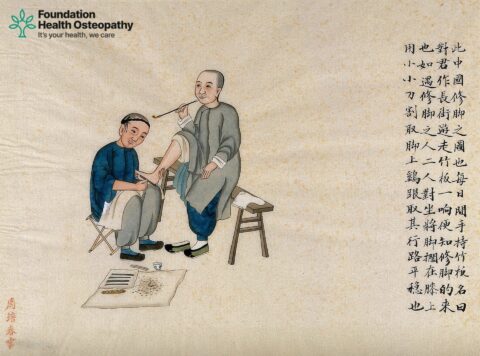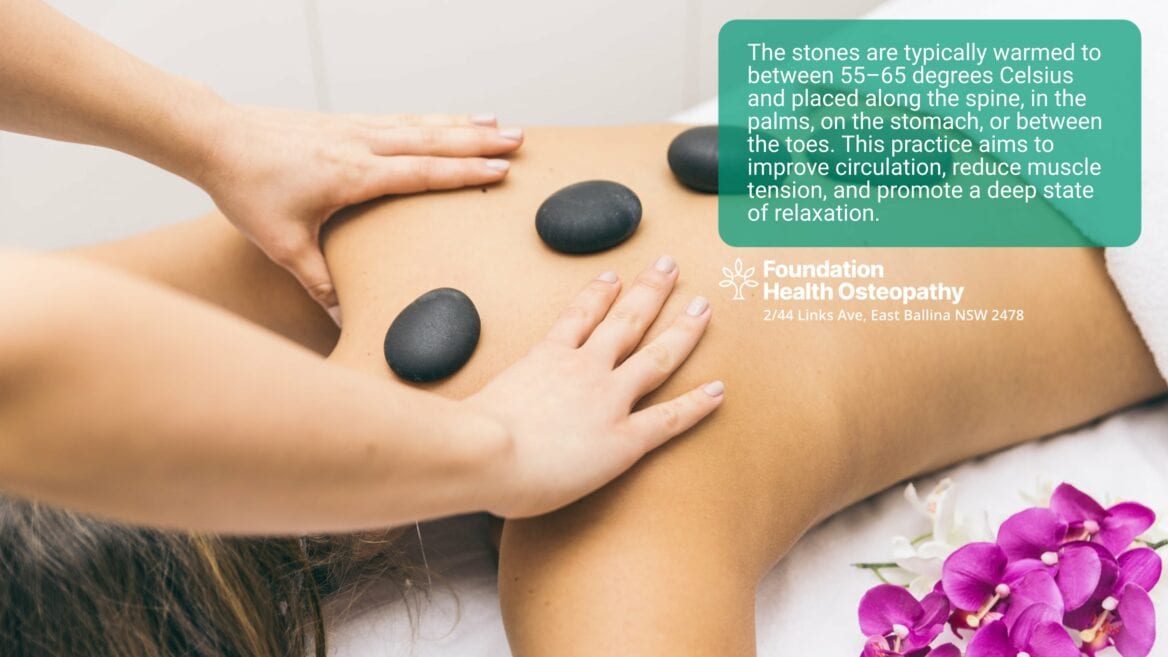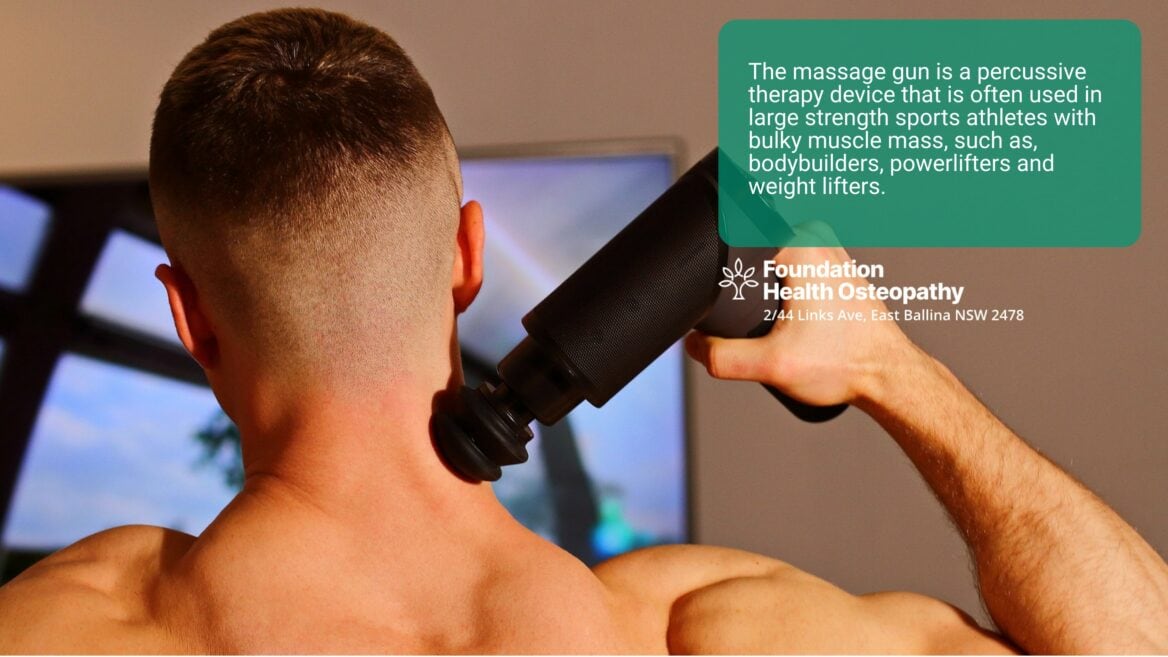Massage therapy includes a variety of techniques like Swedish, deep tissue, and sports massage, each with distinct health impacts. Its origins trace back to ancient civilisations with modern adaptations. It has therapeutic benefits such as pain management, enhanced mental health, improved sleep, and better blood circulation.
Specialised massages can be beneficial for pregnant women, older adults, and physiotherapy exercises. Regular incorporation of massage into a wellness routine can greatly aid in overall well-being.
What is Massage?
Massage is a traditional practice that involves manipulating body tissues to improve health and well-being. It involves applying pressure, tension, motion, or vibration to the body’s soft tissues. Techniques include Swedish, deep tissue, and acupressure, targeting specific needs like stress relief and muscle rehabilitation. Massage therapy integrates anatomical and physiological knowledge to address physical issues, promote relaxation, and facilitate psychological healing.
How does Massage work?
Massage is a therapeutic practice that uses pressure, stretching, and rhythmic movements to improve muscle function, healing, and relaxation. It stimulates nerves, reduces muscle tension, and releases endorphins, reducing stress and promoting psychological ease.
Massage also improves lymphatic drainage, immune system function, and tissue regeneration. Its effectiveness lies in its ability to support the body’s natural healing processes and improve mental health.
Where did Massage techniques originate?

Massage techniques, with origins spanning ancient civilisations, have long been revered for their healing properties and remedial massage therapy applications. These practices, dating back over 5,000 years, were cultivated across China, Egypt, India, Greece, and Rome, each civilisation embedding massage into its health and medicinal traditions.
In China, massage was integral to Traditional Chinese Medicine, addressing health conditions through energy flow and meridian channels. Egyptian hieroglyphs illustrate massage as part of burial rituals and healthcare, indicating its dual role in ceremonial practices and healing.
Indian Ayurveda incorporated massage as a method to harmonise the body’s energies, often employing light pressure to soothe ailments. Greek and Roman societies utilised massage to prepare athletes and maintain health, pioneering remedial massage therapy techniques.
What are the different types of Massage?
There are numerous types of massage therapy, each with distinct techniques and purposes. Here are some of the most common ones:
1. What is Swedish Massage?
Swedish massage is globally recognised for its relaxation and rejuvenation benefits. It is a form of full body massage that is widely employed by healthcare professionals due to its substantial properties of massage. This technique involves long, gliding strokes, combined with kneading and circular motions, all applied with strong pressure to the body for massage.
The primary objective of Swedish massage is to enhance the body’s range of motion and alleviate feelings of tension. It promotes increased blood circulation and lymphatic drainage, leading to a sense of overall well-being. As a relaxation massage, it helps in reducing stress and anxiety, making it a preferred choice for individuals seeking both physical and mental relaxation.
2. What is Remedial Massage?
Remedial Massage is a therapeutic form of massage that targets and treats the body’s specific areas of tension and imbalance. It employs diagnostic techniques to identify the underlying causes of musculoskeletal issues, followed by the application of specialized manual therapy methods to alleviate pain, improve mobility, and facilitate recovery. This form of massage integrates deep tissue manipulation, myofascial release, and trigger point therapy to break down adhesions, stimulate blood circulation, and enhance lymphatic drainage, promoting the body’s natural healing processes. Remedial Massage is beneficial for individuals suffering from chronic pain, injury, or postural problems, offering a tailored approach that addresses individual health conditions and enhances overall well-being. It is recognized in the medical community for its effectiveness in rehabilitating injured muscles, reducing inflammation, and increasing joint mobility, thereby serving as a complementary treatment to conventional medical care.
Book with one of our Remedial Massage Therapists today
3. What is Deep Tissue Massage?
Deep tissue massage primarily targets muscle tension and aims to reach the deeper layers of muscle tissue and fascia. This technique is often employed by a massage therapist to alleviate chronic muscle pain and tension. The application of slow, deliberate strokes and deep finger pressure helps to break up muscle adhesions and promote healing.
Deep tissue massages are similar to remedial massage, where the remedial massage therapist manipulates the body’s soft tissues to alleviate pain, treat injuries and stimulate healing.
4. What is Sports Massage?
Sports massage focuses on the needs of athletes and those engaging in regular physical activity, offering targeted relief for the unique strains and stresses these individuals regularly experience. This therapy, performed by certified remedial therapists, is designed to enhance athletic performance, remove muscle soreness and aid in sports injuries rehabilitation. The massage gun is a percussive therapy device that is often used in large strength sports athletes with bulky muscle mass, such as, bodybuilders, powerlifters and weight lifters.
5. What is Reflexology?
Reflexology is popular with natural medicine practitioners. It is a form of foot massage that utilises various foot massage techniques to stimulate pressure receptors in these areas. This approach, often referred to as zone therapy, is akin to acupressure.
The pressure applied during a reflexology session triggers a relaxation response, making it a popular complementary therapy to traditional medicine. Some foot massage tips to maximise the benefits of massage therapy include applying steady pressure and focusing on the reflex points.
6. What is Shiatsu Massage?
Shiatsu is a form of body massage that uses no essential oils but instead focuses on manipulating and balancing the body’s energy flow for therapeutic effects. Using thumbs, fingers, and palms, practitioners apply pressure to meridian points, aligning with the philosophy of traditional Chinese medicine that targets the flow of qi, or vital energy. Shiatsu is often performed on a floor mat, without the need for massage tables, allowing for the application of pressure through various angles and movements, with the recipient fully clothed.
Unlike Western massage therapies that primarily manipulate muscles and soft tissues, Shiatsu emphasizes restoring the energetic balance, aiming to enhance the body’s natural ability to heal and maintain health.
7. What is Thai Massage?
Thai massage is a practice with deep roots in Buddhist tradition, offering a combination of stretching, yoga-like postures, and acupressure to promote wellness and relaxation. This holistic massage is typically performed by a skilled masseur on a padded mat on the floor, with the client fully clothed.
The masseur uses their hands, knees, legs, and feet to move the client into a series of yoga-like stretches. It is among the range of massage therapies that focus on different areas of the body including back massage, neck massage, and massage foot. Full body massages like Thai massage, also known as Thai yoga massage, are popular in corporate wellness programs for their all-encompassing approach to stress relief.
8. What is Hot Stone Massage?
Hot Stone Massage is a therapeutic technique involving heated stones placed on specific body parts to enhance relaxation and healing. Originating from ancient healing practices, this method utilises basalt stones known for their heat retention properties. The stones are typically warmed to between 55–65 degrees Celsius and placed along the spine, in the palms, on the stomach, or between the toes. This practice aims to improve circulation, reduce muscle tension, and promote a deep state of relaxation. The heat from the stones penetrates deep into the muscles, facilitating the easing of stiffness and increasing oxygen flow to the tissues.

9. What is Aromatherapy Massage?
Aromatherapy Massage uses essential oils to improve psychological and physical well-being, promoting relaxation and sleep meditation. It reduces stress and improves circulation, contributing to general health. Prenatal massage uses gentle relaxation techniques to alleviate discomfort and promote wellness during pregnancy.
10. What is Trigger Point Massage?
Trigger Point Massage targets specific areas of muscle tension and knots, known as trigger points, that cause pain and discomfort. These points often refer pain to other parts of the body when pressed. It aids in structural integration and myofascial release, similar to dry needling massage. It’s suitable for various settings, including mobile services and aged care massage, where comfort and pain alleviation are important. This method is not only about relieving joint pain but also about identifying and treating the root cause of muscular dysfunction.
Trigger Point Therapy is particularly effective for individuals with chronic pain, overuse injuries, and muscle strains, offering relief and promoting healing.
11. What is Lymphatic Drainage Massage?
Lymphatic Drainage Massage targets the lymphatic system, a critical part of the immune system that helps rid the body of toxins, waste, and other unwanted materials. It is a therapeutic technique that uses gentle pressure and rhythmic circular movements to stimulate lymph flow and detoxify the body. It is often used as a decongestive therapy for lymphedema patients. Unlike Thai or Hawaiian massages, it focuses on superficial skin layers. Studies confirm its effectiveness in managing fluid retention and boosting immunity.
12. What is Couples Massage?
Couples massage is a shared experience where two individuals receive massage treatments simultaneously in the same room, each with a separate therapist. The setting fosters a synchronized, relaxing atmosphere, allowing partners to enjoy therapeutic benefits while in each other’s presence. This form of massage is designed to provide relaxation, stress relief, and a sense of connection between the recipients.
Couples massage is not limited to romantic partners but also extends to friends or family members seeking a shared wellness session. It offers a unique opportunity to unwind, communicate, and strengthen relationships in a calm and nurturing environment.
What are the lesser known forms of massage?
You may wish to research some of the following forms of massage Balinese massage, Biodynamic massage, Chavutti Thirumal, Cryomassage, Cup massage, Head massage, Honey massage, Hydro massage, Infant massage, Lingam massage, Lomilomi massage, Manual lymphatic drainage, Medical massage, Pediatric massage, Rolfing, Sobada, Stone massage, Traditional Thai massage, Tui na, Vibromassage, Watsu and Yoni massage.
For a more complete list of Massage Therapies visit this page.
Who benefits from Massage therapy?
Massage therapy is beneficial for a broad spectrum of individuals, including those dealing with stress, athletes, people suffering from chronic pain, patients in rehabilitation, pregnant women, individuals with sleep disorders, sedentary office workers, people experiencing headaches or migraines, older adults, and those with mental health conditions.
It offers a range of physical and mental health benefits, such as reducing stress and anxiety, improving recovery and performance in athletes, alleviating chronic pain, aiding in rehabilitation, enhancing sleep quality, and promoting overall well-being.
Is Massage safe for pregnant women?
Massage therapy during pregnancy can be safe and beneficial if performed by a trained therapist. It addresses physical challenges like back pain, edema, and stress. Therapists should avoid deep pressure and position the mother comfortably. Regular prenatal massages can reduce discomfort, improve labor outcomes, and decrease complications.
Which Massage techniques are best for older adults?
Massage techniques can be beneficial for older adults, providing relief from age-related ailments and enhancing overall well-being. Chair massages are ideal for mobility issues, while trigger point therapy and lymphatic drainage can help manage chronic pain. Facial massage stimulates circulation and promotes skin health.
Ayurvedic medicine can balance the body and mind, while chiropractic care addresses musculoskeletal issues. Thai massages improve flexibility, while oncology massages provide gentle relief for cancer patients.
HICAPS can help subsidise a lot many of the massage services available for older adults.
What is HICAPS?

HICAPS (Health Industry Claims and Payments Service) is an electronic health claims system in Australia that allows clients to claim their health fund rebate instantly after their massage therapy session. This service eliminates the need for clients to pay the full session fee upfront and then manually claim a rebate from their health insurer.
Patients can swipe their health insurance card through a HICAPS terminal at the participating massage clinic, and their claim is processed immediately. The system calculates and deducts the rebate from the total service cost, enabling the client to pay only the gap amount.
HICAPS is widely used in the massage and broader healthcare industry, providing a convenient and efficient way for clients to access and claim their health fund benefits for services like physiotherapy, chiropractic, dental, and massage therapies.
What benefits does Massage offer?
Massage is a therapeutic intervention that can alleviate pain, reduce stress, and improve physical and mental health. It improves blood circulation, eliminates toxins, and promotes muscle relaxation. Regular sessions lower cortisol levels and increase endorphins, serotonin, and dopamine, reducing stress and anxiety. Massage therapy supports immune function, improves sleep quality, and enhances flexibility. It can manage chronic conditions like arthritis, fibromyalgia, and migraines.
How does Massage boost immune function?
Regular massage therapy boosts the body’s production of natural killer cells, essential for fending off viruses and diseases. Massages also reduce cortisol, a stress hormone, which can compromise immune function. This cumulative effect results in a more robust immune response, potentially lowering susceptibility to illness.
How does massage influence psychological well-being?
Massage therapy not only strengthens the immune system but also offers psychological benefits. It reduces stress levels by triggering the release of endorphins, enhancing mood, sleep quality, and mental clarity. It also helps combat anxiety and depression by lowering cortisol levels. These psychological improvements lead to better social interactions, enhanced work performance, and complete quality of life.
How often should one have a Massage?
The frequency of massage sessions depends on individual needs, goals, and health conditions. For relaxation, a monthly massage is sufficient, while chronic pain, high stress, or specific rehabilitation needs may require more frequent sessions.
Athletes or those with physically demanding lifestyles (like dancers or labourers) may require more regular treatments. The optimal frequency depends on the body’s response and the advice of a qualified massage therapist.
How does Massage assist in muscle recovery?
Massage therapy enhances muscle recovery by promoting blood circulation, reducing inflammation, and promoting cell regeneration. It delivers essential nutrients and oxygen to muscle tissues, flushes out toxins and lactic acid buildup, and aids in muscle fiber repair. The mechanical pressure applied during massage can also stimulate muscle fiber repair, making it a valuable part of a regular wellness routine.
Is Massage beneficial for managing pain?
Massage therapy aids in muscle recovery and pain management by stimulating the release of endorphins, the body’s natural painkillers, and improving circulation. It also reduces inflammation and swelling, contributing to pain. The frequency of massage sessions depends on individual needs, with weekly sessions beneficial for chronic pain and monthly sessions for minor aches.
Can Massage improve mental health?
Massage therapy has been shown to improve mental health by reducing stress, anxiety, and depression symptoms by increasing the production of endorphins, serotonin, and dopamine in the brain. This promotes relaxation, mood improvement, and reduced distress.
The tactile stimulation also reduces isolation, supporting emotional balance and mental clarity. Massage offers a holistic approach to mental health care, demonstrating its potential as a complementary treatment for various psychological conditions.
Can Massage lower anxiety levels?
Regular massage therapy can significantly reduce anxiety levels and improve mental health by stimulating the release of endorphins, or ‘feel-good’ hormones, which promote relaxation and tranquility, making it a practical tool for managing anxiety.
Does Massage Aid Sleep?
Massage can improve sleep quality by decreasing cortisol levels and increasing serotonin and melatonin, hormones that regulate sleep. The ideal frequency for sleep enhancement varies among individuals, but a general guideline is once a week. This consistent relaxation and stress relief promotes better sleep over time. Massage can be a useful tool in improving sleep patterns when used regularly and appropriately.
Can Massage enhance blood flow?
Massage therapy can improve blood circulation by stimulating tissues, dilating blood vessels, enhancing oxygen and nutrient delivery to cells, and removing metabolic waste products. The frequency depends on individual health needs, with regular, weekly, or bi-weekly massages contributing significantly to improved blood circulation.
How can one incorporate Massage into a wellness routine?
Incorporating massage into a wellness routine involves identifying personal health goals, consulting with massage professionals, establishing a regular massage schedule, and combining it with other wellness activities like yoga and exercise. Listening to your body’s response and creating a balanced routine with proper nutrition and sleep are also crucial. This approach enhances both physical and mental well-being, making massage a valuable component of general health maintenance.
Can Massage stimulate hair growth?
Regular scalp massage can stimulate hair growth by increasing blood flow to hair follicles and strengthening hair roots. This new area of study suggests potential benefits, but the effectiveness may vary between individuals and depends on factors like massage technique, frequency, diet and exercise patterns.
How does Massage impact skin health?
Massage not only boosts hair growth but also improves skin health by stimulating blood flow, reducing stress hormones, and promoting toxins removal. It also aids in the removal of toxins, resulting in clearer, healthier skin. Massage oils offer additional benefits like hydration, nourishment, and anti-aging effects, making it an essential part of a wellness routine.
Can Massage correct posture?
Yes, massage can aid in correcting posture by addressing the muscle imbalances and tension that contribute to poor alignment. Through techniques that relax and lengthen shortened, tight muscles, massage therapy helps restore the body’s natural posture. Chronic muscle tension can pull the body out of alignment, leading to compensatory patterns that further exacerbate postural issues. Massage can release these tensions, allowing the body to return to a more balanced and aligned state.
Massage targets the soft tissues, realigning and loosening muscles and connective tissues that have become rigid and contracted due to prolonged sitting, repetitive motion, or incorrect ergonomics.
While massage alone may not completely correct posture, it is an effective component of a comprehensive approach that includes physical therapy, exercise, and ergonomic adjustments.
Can Massage therapy aid in detoxification?
Massage therapy is a crucial component in detoxification, promoting the body’s natural elimination process. It stimulates the lymphatic system, which removes toxins, metabolic waste, and excess water. Regular massage therapy sessions improve overall health by enhancing immunity, reducing stress, and promoting relaxation.
How does Massage complement other treatments?
Massage therapy is a holistic treatment that can enhance the benefits of other treatments like physiotherapy, acupuncture, and yoga. It relaxes the body and mind, enhancing the effectiveness of physiotherapy exercises. Massage also facilitates easier needle insertion and manipulation in acupuncture, and helps loosen muscles in yoga, making postures more effective.
Are there any tools for home Massage?
Home massage tools like massage chairs, cushions, handheld massagers, massage balls, foam rollers, electric pulse massagers, and massage oils and lotions can help individuals incorporate this therapy into their daily wellness routine. Selecting the right tools depends on personal comfort and therapeutic needs, as a home massage routine can significantly contribute to general health and well-being.

How does massage therapy benefit palliative care patients?
Massage therapy, when combined with palliative care, provides significant benefits like pain relief, emotional comfort, and improved quality of life for patients with serious illnesses. Trained therapists use techniques to relax muscles, improve circulation, and promote restful sleep, fostering a more essential mindset. The nurturing human touch also provides emotional support, making massage therapy a valuable, non-invasive adjunct to traditional palliative care.
SOURCES
https://www.massagemyotherapy.com.au/

